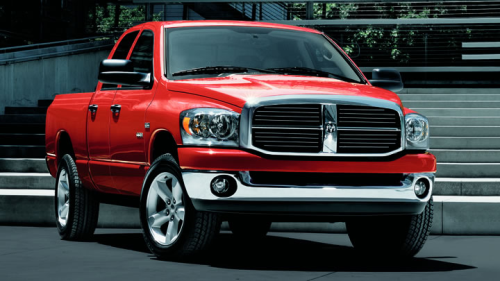
The U.S. auto industry, in spite of anemic economic growth, grew sales 9.9% in September. Chrysler, General Motors, and Ford led the charge, reporting particularly robust activity in pick-up/light truck sales. Meanwhile, several luxury automakers report record-breaking growth.
“Coming off a solid Labor Day sale, retail sales exhibited unexpected strength in the second week of September, as the recovering inventory levels have helped to bring buyers back into the market,” said Jeff Schuster, executive director of global forecasting at J.D. Power and Associates.
Following is a snapshot of automakers’ sales activity during the month:
- Audi: 11.5%
- BMW: 11.4%
- Chrysler: 27%
- Ford: 9%
- General Motors: 20%
- Honda: (-8%)
- Mercedes: 15%
- Nissan: 25%
- Toyota: (-17.5%)
- Volkswagen: (35.6%)
Many manufacturers attribute the growth primarily to great products combined with timely scrappage. “For GM, all of the factors that say this is a good time to buy a new vehicle outweigh the bad news that appears to be slowing down the broader economic recovery,” said Don Johnson, vice president, U.S. sales operations. “We’re well positioned going forward because we have momentum and another wave of fuel-efficient passenger cars launching over the next several months at Chevrolet, Buick and Cadillac.”
GM is not along. Ford, driven by a 35 percent increase in its brand utilities and a 15-percent gain in Ford truck sales, saw an increase of 175,199 units, or 9 percent, versus last year. Ford brand utilities had their best September sales month since 2004. Sales totaled 48,798 for the month, delivering year-to-date sales of 425,910 utilities. “Ford continues to deliver strong sales results in a dynamic marketplace with a broad portfolio of fuel-efficient, high-quality products,” said Ken Czubay, vice president, U.S. marketing sales and service. “This is further proof that Ford is offering the vehicles – with the fuel economy and technologies – that people truly want and value.” September sales growth was particular robust at Chrysler Group LLC, which led September U.S. auto sales gains with a 27% increase. This in large part due to high deliveries of Ram Pick-ups.
Higher-end brands also participated in the hit parade. Audi of America, for example, reported record September U.S. sales of 9,725 vehicles, topping the previous record of 8,151 vehicles sold in 2010. This marked the ninth consecutive month of record-setting sales for the brand in the U.S. market. Audi U.S. year-to-date sales date grew 15.5% to 84,981. The luxury car brand has recorded record sales in 13 out of the past 14 months.
Ditto for Mercedes-Benz USA, which reported September sales of 23,897 vehicles, a 15.6% improvement over September 2010. This past month was also Mercedes' highest September volume on record.
Not all manufacturers fared as well. Toyota—still recovering from the impact of supply chain disruptions in the wake of the natural disaster in Japan—said sales were off nearly 18% in September. Company executives, however, are hopeful that the worst is behind them. "In September, production in both North America and Japan returned to normal levels for the first time since the March 11 earthquake and tsunami,” said Bob Carter, Toyota Division group vice president and general manager, Toyota Motor Sales, USA, Inc. “Our plants are now working overtime and dealer deliveries will continue to increase through the remainder of 2011.”
Looking ahead to the end of the fourth quarter, many manufacturers are expecting a strong close to 2011. GM, for instance, continues to expect that the full-year U.S. vehicle sales will be in the low end of our 13 million – 13.5 million unit range, given seasonally strong sales and the fact that some of the company’s domestic and Japanese competitors have largely resolved their production issues.
Given the relative strength of September, J.D. Power is maintaining its forecast for light-vehicle sales in 2011 and 2012. Total light-vehicle sales for 2011 are expected to come in at 12.6 million units, a 9 percent increase from 2010. Retail light-vehicle sales are forecasted at 10.2 million units for 2011, an increase of 11 percent from 2010. For 2012, the outlook for total light-vehicle sales remains at 14.1 million units and retail light-vehicle sales are at 11.5 million units. However, there is a high level of uncertainty that remains.
“The uncertain global environment, specifically the debt troubles in Europe, continue to be the major source of downside risk in the U.S. economy and automotive markets,” said John Humphrey, senior vice president of automotive operations at J.D. Power and Associates. “Until a level of stability is reached globally and consumer confidence is returned, the U.S. automotive selling pace is not expected to return to pre-recession levels.”



